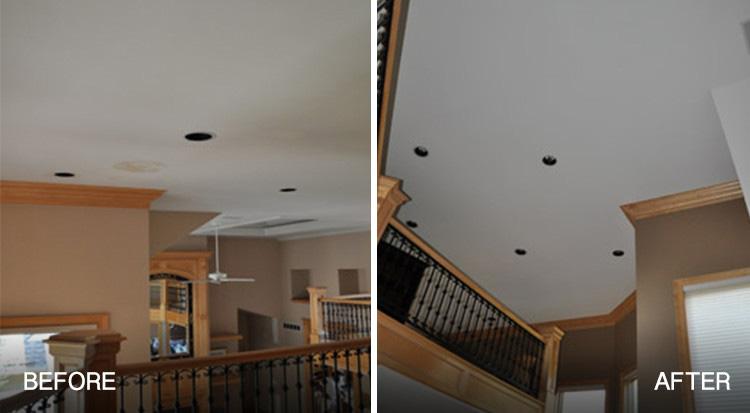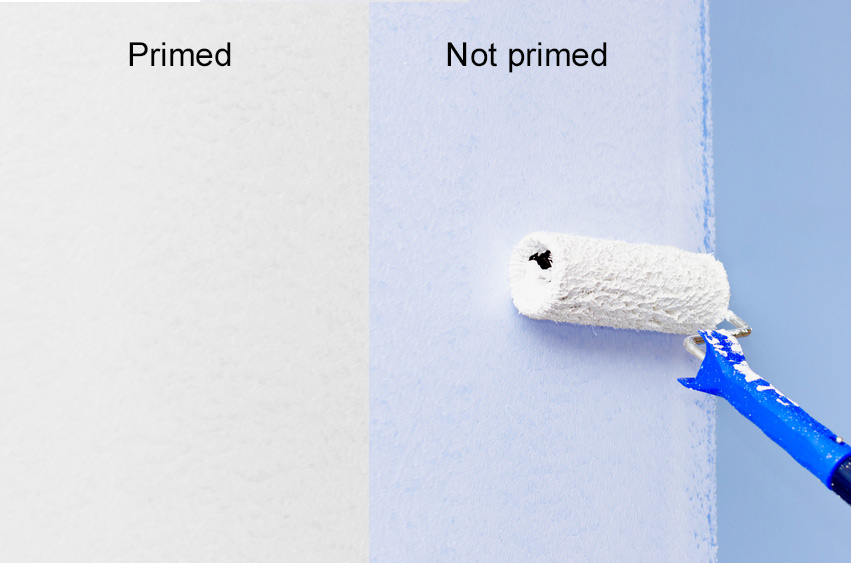You do not have to prime a wall before painting if the wall is in good condition and you are using a high-quality paint. However, if the wall is in poor condition or you are using a low-quality paint, it is best to prime the wall before painting.
No, you don’t have to prime a wall before painting, but it’s always a good idea. Priming provides a blank slate for paint and ensures that the paint will adhere to the surface. It also provides a layer of protection against stains and makes the paint job last longer.

Credit: www.sharperimpressionspainting.com
What happens if you don’t use primer before painting?
When you paint without primer, the paint may not adhere to the surface as well, and it may not last as long. The paint may also chip or peel more easily.
Is it necessary to prime walls before painting?
If you’re painting a new wall that has never been painted before, you will definitely need to prime it first. This will help to create a smooth surface for the paint to adhere to and will also help to prevent any potential bleed-through from the new paint.
If you’re painting over an existing paint job, you may not need to prime the walls first.
However, if there are any areas where the existing paint is peeling or flaking, you will want to sand those areas down and prime them before painting. This will help to ensure that your new paint job will look its best.
Can I just paint over old paint?
When it comes to painting your home, you may be tempted to simply paint over old paint. However, there are a few things you should keep in mind before taking this shortcut.
Unless you are planning on painting over an already light color with an even lighter color, you will likely need to use a primer.
This is because old paint can be uneven and have a rougher texture, which can make it difficult for new paint to adhere properly.
It is important to consider the type of paint you are using. If you are painting over oil-based paint with water-based paint, you will need to use a paint stripper to remove the old paint first.
Otherwise, the new paint will not adhere properly and will eventually peel off. Finally, keep in mind that painting over old paint can be more time-consuming and difficult than starting from scratch. If you are not up for the challenge, it may be best to hire a professional painter to do the job for you.
Why Prime Before Painting? How to Paint
When to use primer before painting
Primer is a vital step in the painting process, but knowing when to use it can be tricky. Here is a guide to help you determine when to use primer before painting:
1. If you are painting over a dark color: If you are painting over a dark color, you will likely need to use primer to ensure that your new paint color is evenly applied and covers the old color completely.
2. If you are painting over a glossy surface: If you are painting over a glossy surface, you will need to use primer to help the new paint adhere to the surface.
3. If you are painting a new piece of furniture: If you are painting a new piece of furniture, you may not need to use primer if the furniture is unfinished. However, if the furniture is finished, you will likely need to use primer to ensure that the paint adheres properly.
4. If you are painting a wall: If you are painting a wall, you will likely need to use primer to ensure even coverage and to help the paint adhere to the surface.
5. If you are painting trim: If you are painting trim, you may not need to use primer if the trim is unfinished. However, if the trim is finished, you will likely need to use primer to ensure that the paint adheres properly.
In general, primer is a good idea whenever you are painting over a dark color, a glossy surface, or a new piece of furniture. It will help ensure even coverage and help the paint adhere to the surface.
Painting over painted walls
If you’re considering painting over painted walls, there are a few things you should keep in mind. First, it’s important to know that paint can act as a barrier to protect the wall from damage. If the paint is in good condition, it can actually provide a good surface for new paint to adhere to.
However, if the paint is peeling or otherwise in poor condition, it’s best to remove it before painting.
Once you’ve determined whether or not you need to remove the old paint, you’ll need to choose a new paint color. It’s important to pick a color that you love, because you’ll be living with it for a while.
If you’re not sure what color to choose, you can always consult with a professional painter.
Once you’ve chosen your new paint color, it’s time to get to work. Start by painting the trim around the walls.
This will help you get a feel for the new color and make sure that you like it. Once you’re happy with the trim, you can move on to painting the walls themselves.
When painting over painted walls, it’s important to use a primer.
This will help the new paint to adhere to the wall and will also help to cover up any imperfections in the wall. Once the primer is dry, you can start painting the walls with your new color.
Painting over painted walls can be a great way to change the look of your home without having to do a complete renovation.
Keep these tips in mind and you’ll be able to paint over painted walls with ease.
Do you need primer for dark paint
If you’re painting over a dark wall with a light color, you will likely need to use a primer. This will help to ensure that the new paint color goes on evenly and doesn’t look streaky. In general, it’s a good idea to use a primer whenever you’re painting over a dark color, regardless of what the new color is.
Do you need primer with behr paint
When it comes to painting your home, there are a lot of different factors to consider. One of the most important decisions you’ll make is what type of paint to use. If you’re considering Behr paint, you may be wondering if you need to use primer as well.
Here’s what you need to know about primer and Behr paint. In general, you won’t need to use primer with Behr paint. That’s because Behr paint is a high-quality paint that contains primer.
So, if you use Behr paint, you can skip the step of applying primer to your walls.
Of course, there are always exceptions to the rule. If you’re painting over a very dark color, you may want to use a primer to help the new color stand out.
Or, if you’re painting a light color over a dark wall, you may want to use a primer to help prevent the new color from looking too dull.
If you’re not sure whether or not you need to use primer, it’s always best to consult with a painting professional. They can take a look at your project and give you specific advice on what will work best.
Do i need to prime before painting wood
If you’re painting bare wood, you need to prime it first. This will help the paint to stick to the surface and will provide a more even finish. If you’re painting over existing paint, you may not need to prime, but it’s always a good idea to do a test patch first to see how the new paint will adhere.
Do i need to prime before painting exterior
It’s generally a good idea to prime before painting any exterior surface. This is because primer provides a good foundation for the paint to adhere to, and it also helps to protect the surface from weathering and other damage. There are a few exceptions to this rule, but in general, it’s always best to prime before painting.
Paint and primer in one
If you’re like most homeowners, you’re always looking for ways to save time and money when it comes to painting your home. One way to do this is to use a paint and primer in one. This type of paint can be a great time saver because you don’t have to apply a separate primer before painting.
There are a few things to keep in mind when using a paint and primer in one. First, be sure to read the label carefully. Some of these products require you to add a separate primer before painting, so be sure to follow the directions.
Another thing to keep in mind is that a paint and primer in one may not always provide the best coverage. If you’re painting over a dark color, you may need to apply a second coat of paint to get full coverage. Finally, be sure to test a small area before painting the entire room.
This will help you determine if the paint and primer in one is right for your project.
Paint primer
Paint primer is a paint product that is designed to be used as the first coat of paint on a surface. Primer is usually white or off-white in color, and is applied before the topcoat of paint. Primer is designed to provide a good surface for the topcoat of paint to adhere to, and to improve the durability of the paint job.
Conclusion
If you’re painting a wall that has never been painted before, you will need to prime it first. This will help the paint to adhere to the surface and will also provide a more even finish. If you’re painting over an existing paint job, you may not need to prime the wall first, but it’s always a good idea to do a test patch to see how the new paint will look.

